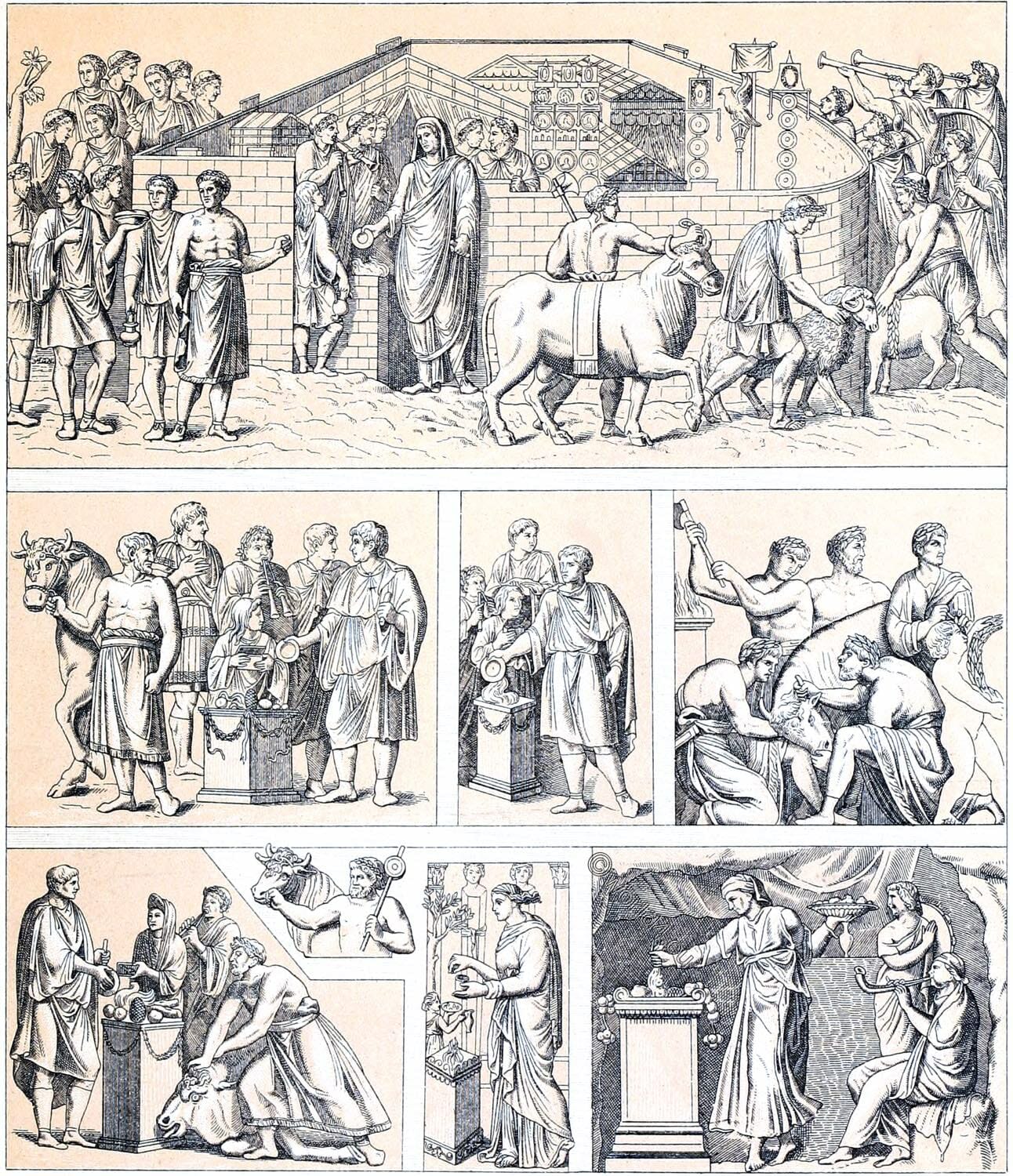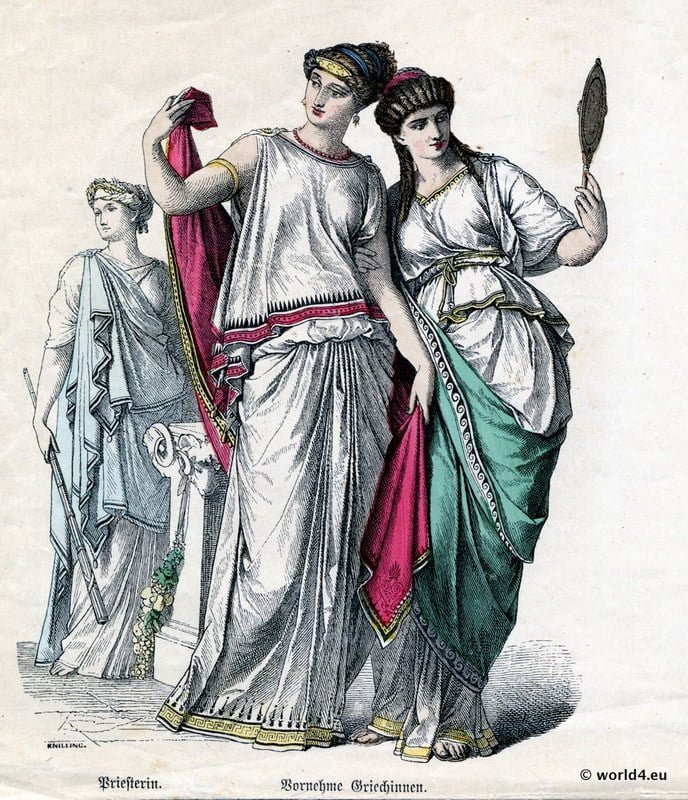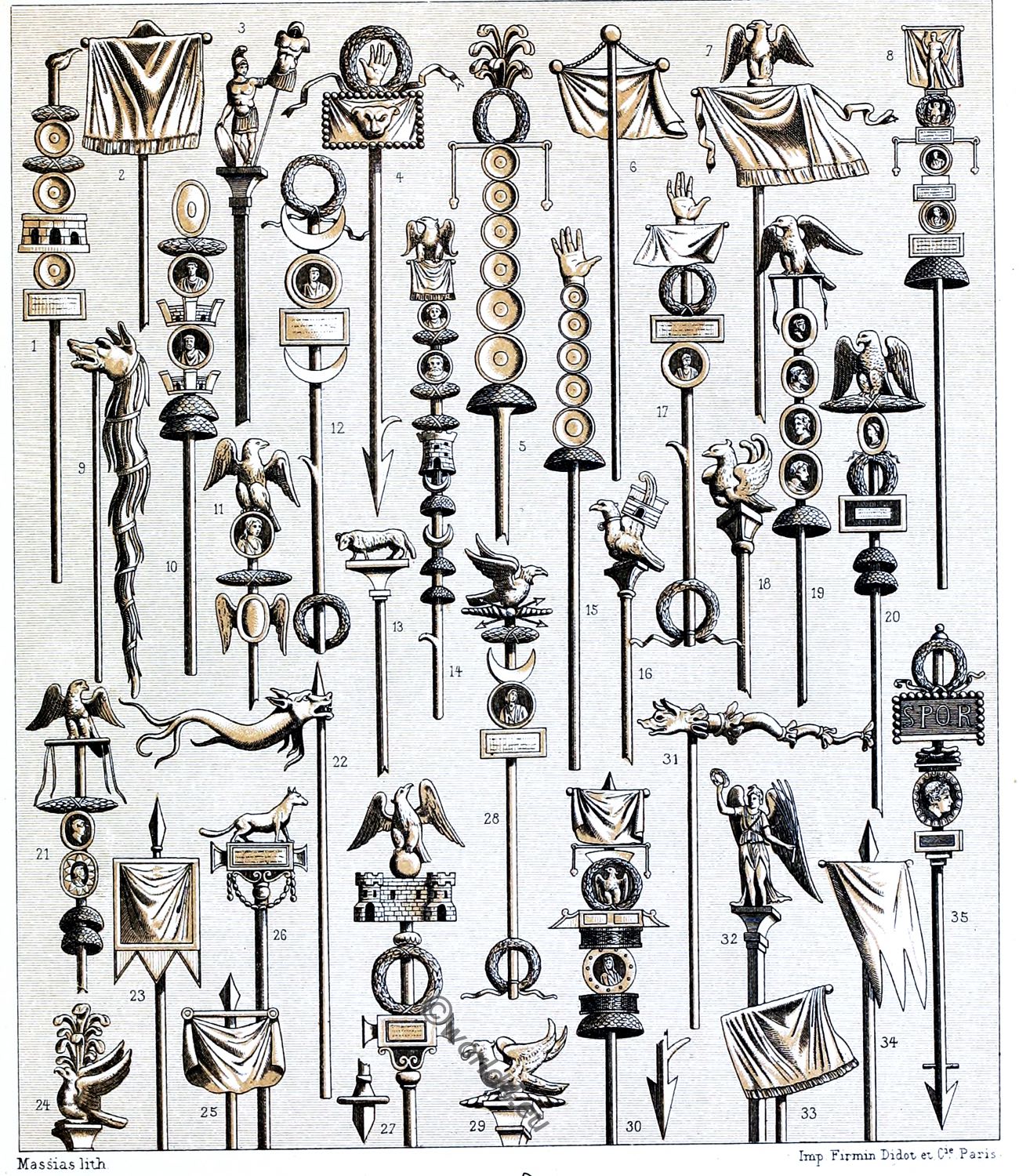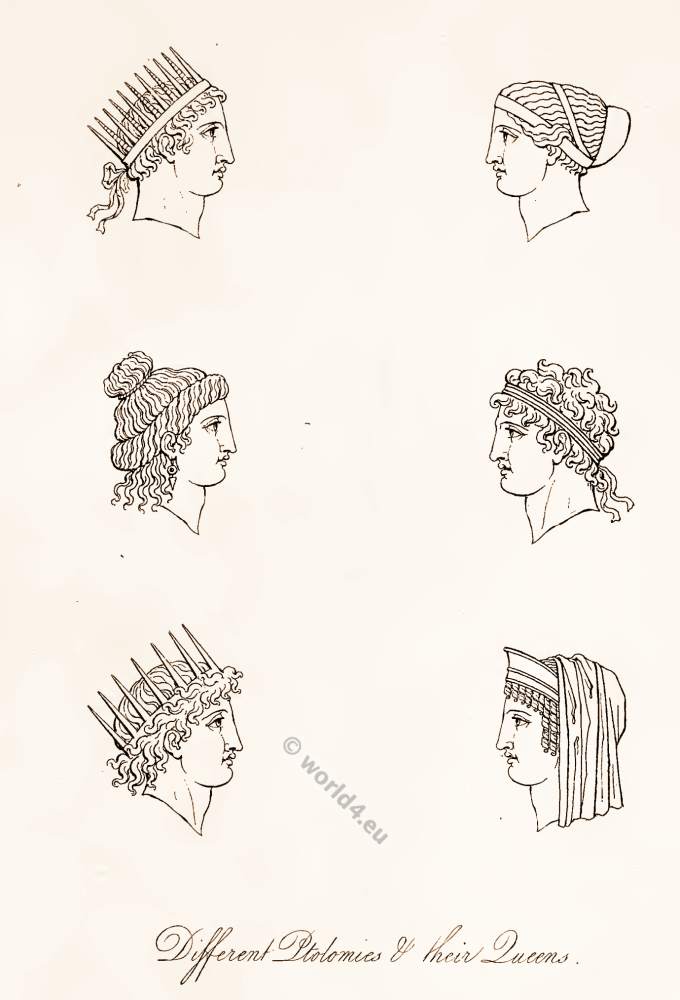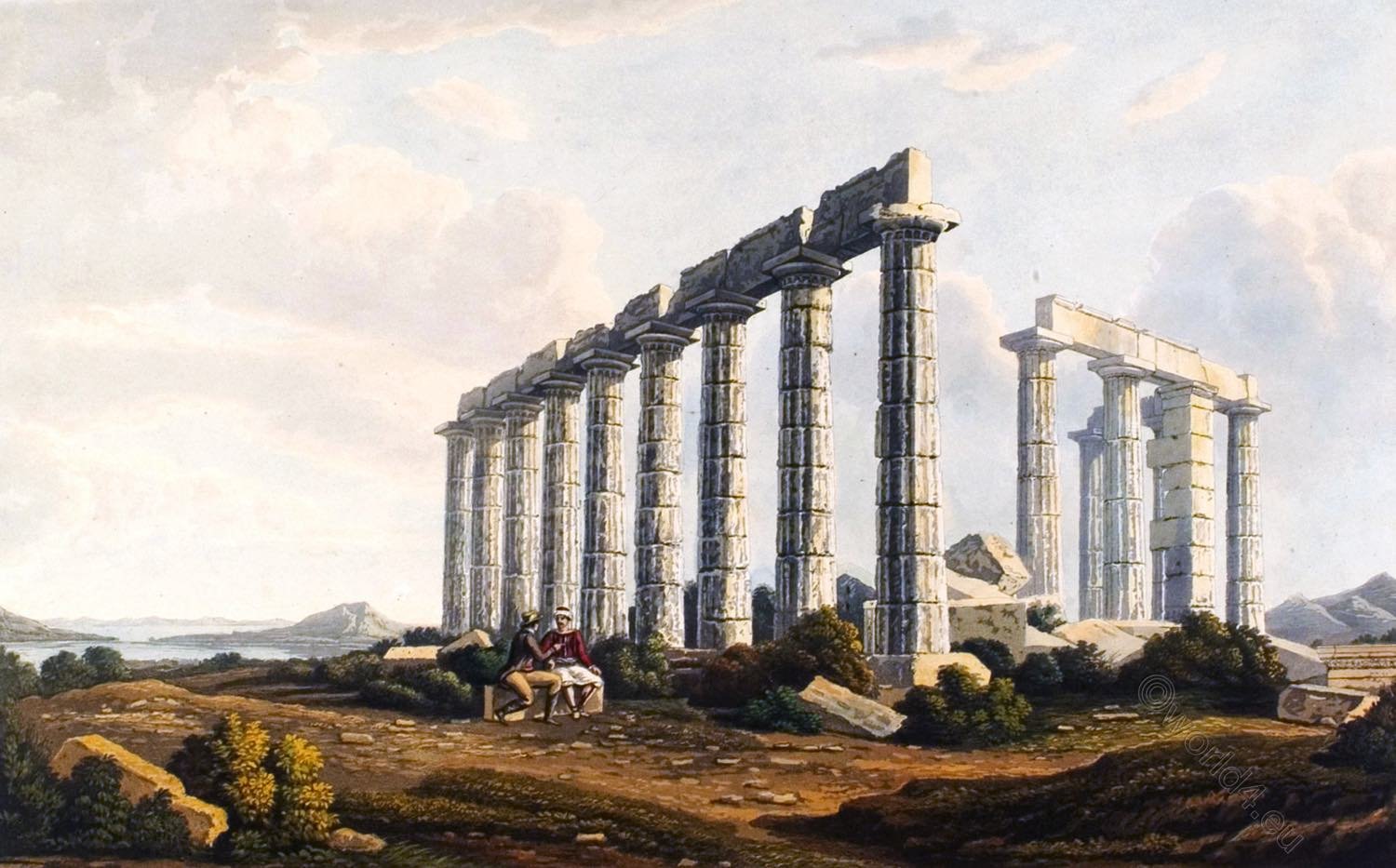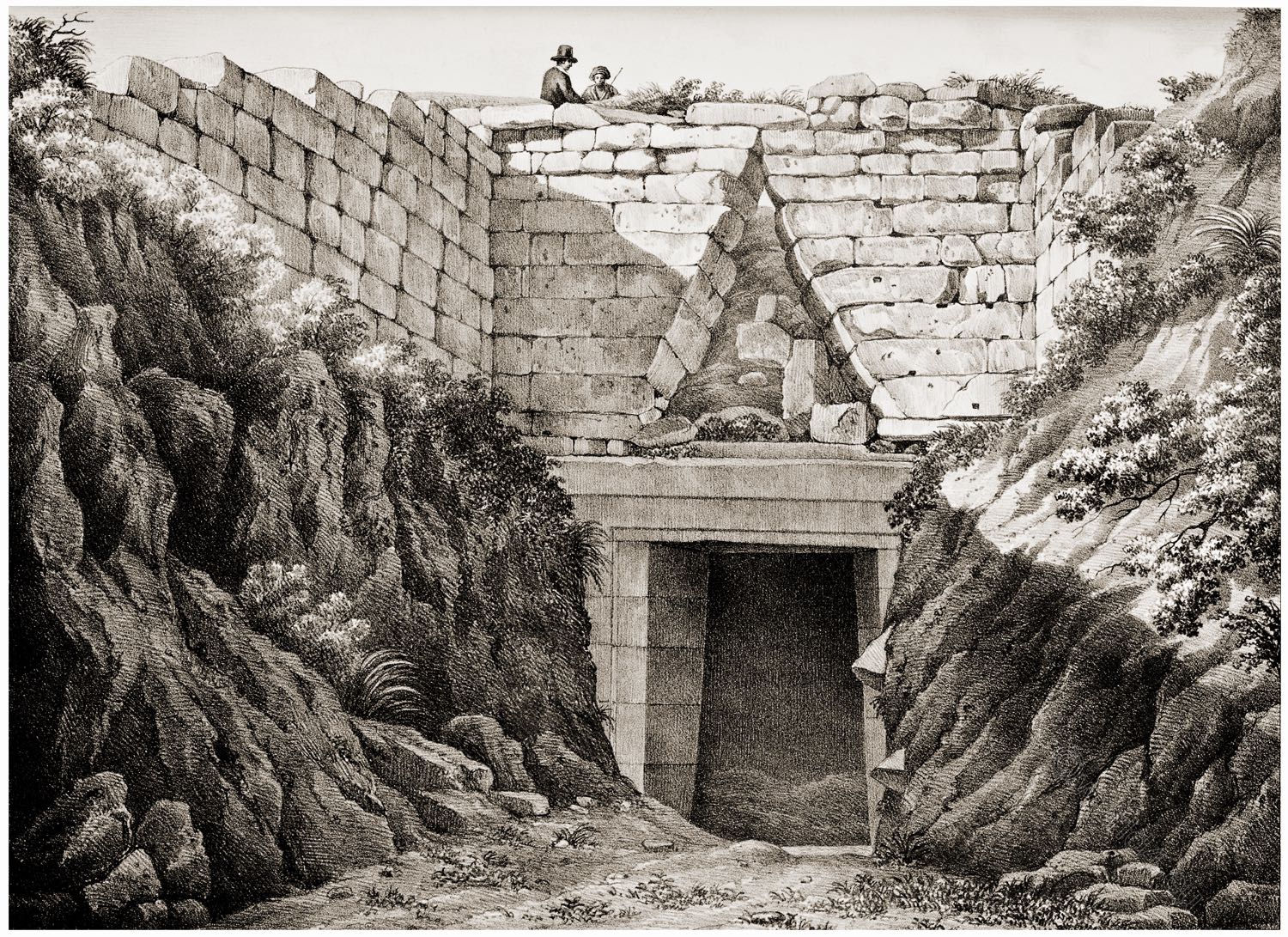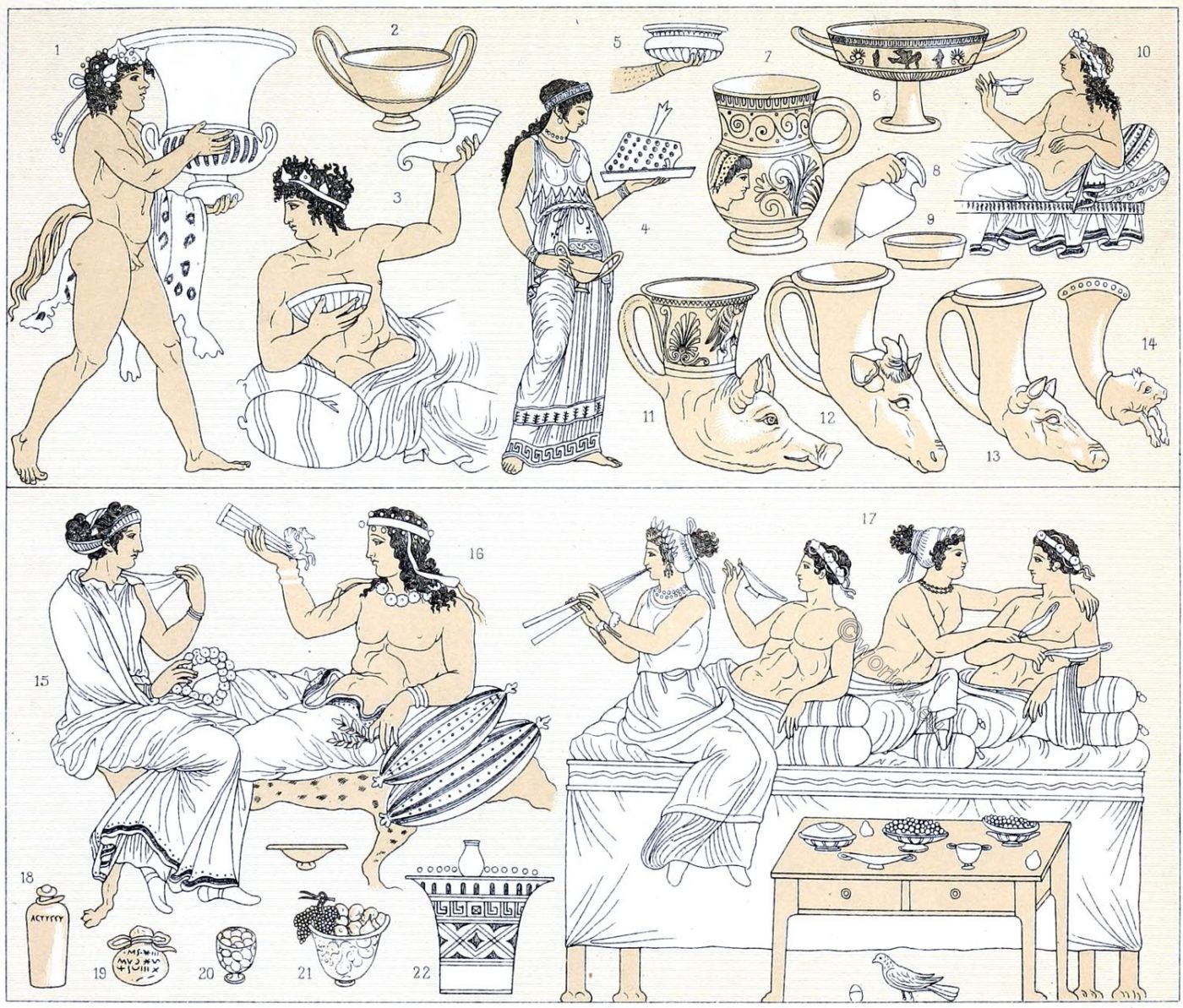
GREECE. MEALS AND BANQUET. FURNITURE AND TABLE EQUIPMENT.
In the oldest time in Greece, the so-called heroic time, people sat at the table, the noblemen on high armchairs with backrests and footrests, the lesser people on low chairs without footrests.
The custom of lying at a table on Klinai (resting couch with bent head end), which usually only had room for two people, only became customary in the course of the 5th century after the Persian Wars, when the Greeks became acquainted with oriental habits. However, the women did not lie at the table, but sat on the Klinai of the husband at the foot end.
Therefore, when one sees women lying at the table in ancient Greek pictures, one must always assume that it is a drinking session in which hetaera take part. Tablecloths and napkins were unknown. Also the use of knives, forks and spoons. One ate with one’s hand and washed one’s hands before and after the meal.
Only for the pouring of the wine spoon-like ladles were used. The main meal was taken at sunset. It usually consisted of three courses: 1. vegetables, especially cauliflower, which the Athenians loved very much, oysters, soft boiled eggs, a mixture of honey and wine; 2. poultry, game, fish; 3. cakes, sweets and fruits.
After the food utensils had been cleared away and the floor cleaned of the discarded remains, bones, bowls, etc., the drinking began.
In later times the table companions were wreathed with laurel and roses. Between the second and third courses there were flute and zither players, dancers, jugglers and buffoons. However, this custom, like the luxury of great guest banquets in general, belongs to the later times, namely the times of the decay of the motherland and the luxuriant flourishing of the Greek colonies.
- No. 1. Crater. Large vessel for mixing the wine with water.
- No. 2 – Kantharos. Drinking vessel with two handles.
- No. 3 – A table companion wreathed with ivy, holding in his right hand a rhtyton, a vessel in the shape of a horn, from which he pours the wine into the drinking bowl. Originally the rhyton consisted of a real animal horn and was therefore also called Keras. Later it was reproduced in clay.
- No. 4 – Greek woman carrying in her left hand a tray with a slice of honey for sweetening the wine, in her right hand a kantharos.
- No. 5 – Drinking bowl.
- No. 6. – Kylix. Drinking cup with foot.
- No. 7. – Kalpis. Get container for water.
- No. 8. – Hydria. Water jug.
- No. 9. – Drinking cup. The same one had different names depending on the shapes like Phiale, Skyphos, Kyathos, Kylix, Kymbe.
- No. 10 – Kline. Bed, richly covered with blankets and pillows.
- No. 11, 12, 13, 14. Rhyton. Drinking horns. They had an opening at the bottom from which the wine flowed into the drinking cups or from which the guest also let it flow directly into the mouth.
- Number 15 and 16. – Man and woman at the table.
- No. 17 – A feast with a hetaera and a flute player playing a dancer. The dove on the floor, the bird of Venus, perhaps points to the erotic character of the meal.
- No. 8: Closed container for storing food.
- No. 19 – A sack like the one with an inscription.
- No. 20 and 21. Glass vessels with fruits.
- No. 22. Bread basket.
(After vase paintings by Willemin, Costumes des peuples de l’antiquité.)
Source: History of the costume in chronological development by Auguste Racinet. Edited by Adolf Rosenberg. Berlin 1888.

